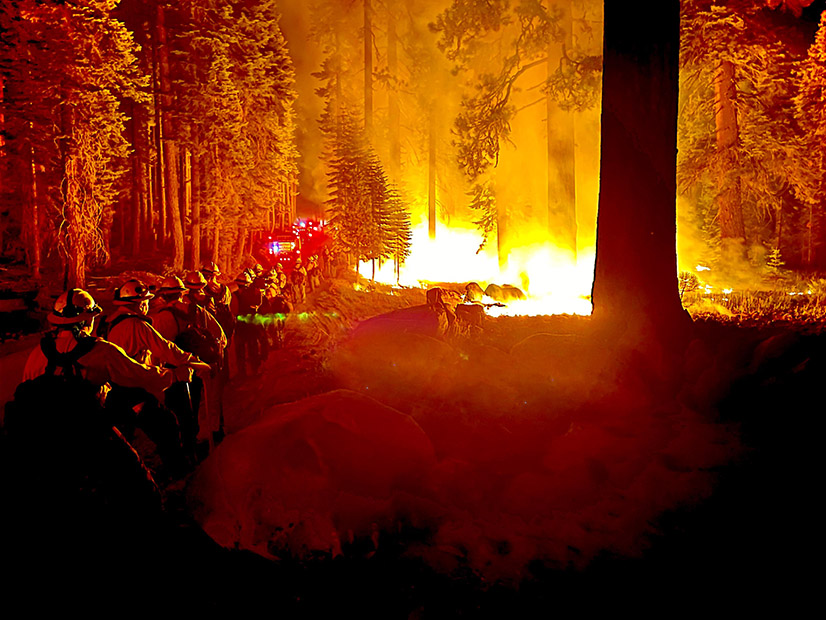PG&E Corp. last week said it could face serious financial consequences from the massive Dixie Fire burning in Northern California but denied it committed any crimes in starting last year’s fatal Zogg Fire.
The company issued its denial of criminal culpability in response to Shasta County District Attorney Stephanie Bridgett’s announcement Thursday that her office had “determined that PG&E is criminally liable for causing the Zogg Fire.”
The fire killed four residents, including a mother and her young daughter, destroyed 204 structures and burned more than 56,000 acres in September and October.
Bridgett said on Facebook that “a final decision as to the nature and grade of charges has not yet been made. A filing decision will be made prior to the anniversary of the Zogg Fire.”
PG&E disputed the prosecutor’s finding in a statement Friday.

“The company already has resolved civil claims with Shasta County and continues to reach settlements with individual victims and their families impacted by the Zogg Fire in an effort to make it right,” the utility said. “We do not, however, agree with the district attorney’s conclusion that criminal charges are warranted given the facts of this case.”
An investigation by the California Department of Forestry and Fire Protection (Cal Fire) found that the Zogg Fire began when a leaning gray pine tree fell onto a PG&E power line near the rural community of Igo, in Shasta County. (See PG&E Equipment Started Zogg Fire, Investigation Finds.)
Cal Fire’s findings came after PG&E acknowledged its equipment probably started the fire and after a federal judge blamed the utility for leaving a line energized during high-threat fire conditions and failing to clear vegetation.
“I think it was reckless, maybe criminally reckless, for PG&E to have left that … gray pine looming,” Judge William Alsup said in a February hearing. “It was leaning at a 60-degree angle over that line. Gray pines … have a shallow root system. That tree had also been burned earlier. That tree was a clear and present danger to the line, and whoever made the decision to leave that tree up should be looked at very carefully. And PG&E did leave it up.”
Dixie Fire
Alsup oversees PG&E’s criminal probation from the San Bruno gas pipeline explosion in September 2010. He has already ordered PG&E to explain its role in starting the Dixie Fire.
The 244,000-acre blaze in the Sierra Nevada foothills was about 30% contained as of Saturday with more than 5,000 firefighters battling it.
PG&E said previously that the fire started July 13, near where a tree had fallen onto one of its distribution lines in the rugged Feather River Canyon. Cal Fire seized PG&E equipment as part of its investigation. (See PG&E Says Its Line May Have Started Dixie Fire.)
In its second-quarter report to the U.S. Securities and Exchange Commission on Thursday, PG&E said it would likely face new liabilities from the Dixie Fire.
“While the cause of the 2021 Dixie Fire remains under investigation and there are a number of unknown facts surrounding the cause … the utility could be subject to significant liability in connection with this fire,” it said. “If such liability were to exceed insurance coverage, it could have a material impact on [PG&E’s] … financial condition, results of operations, liquidity and cash flows.”
PG&E’s stock price, already depressed by news of the Dixie Fire, sunk from $9.24/share prior to Thursday’s earnings report to $9.08 by the close of trading Friday. The company’s stock has yet to recover from its bankruptcy in the wake of catastrophic fires in 2017 and 2018 that cost it tens of billions of dollars. Those fires included the Camp Fire, the state’s deadliest and most destructive wildland blaze, which killed at least 84 residents and leveled the town of Paradise. Fires in 2019, 2020 and 2021, possibly started by PG&E equipment, have kept the company in troubled circumstances.



